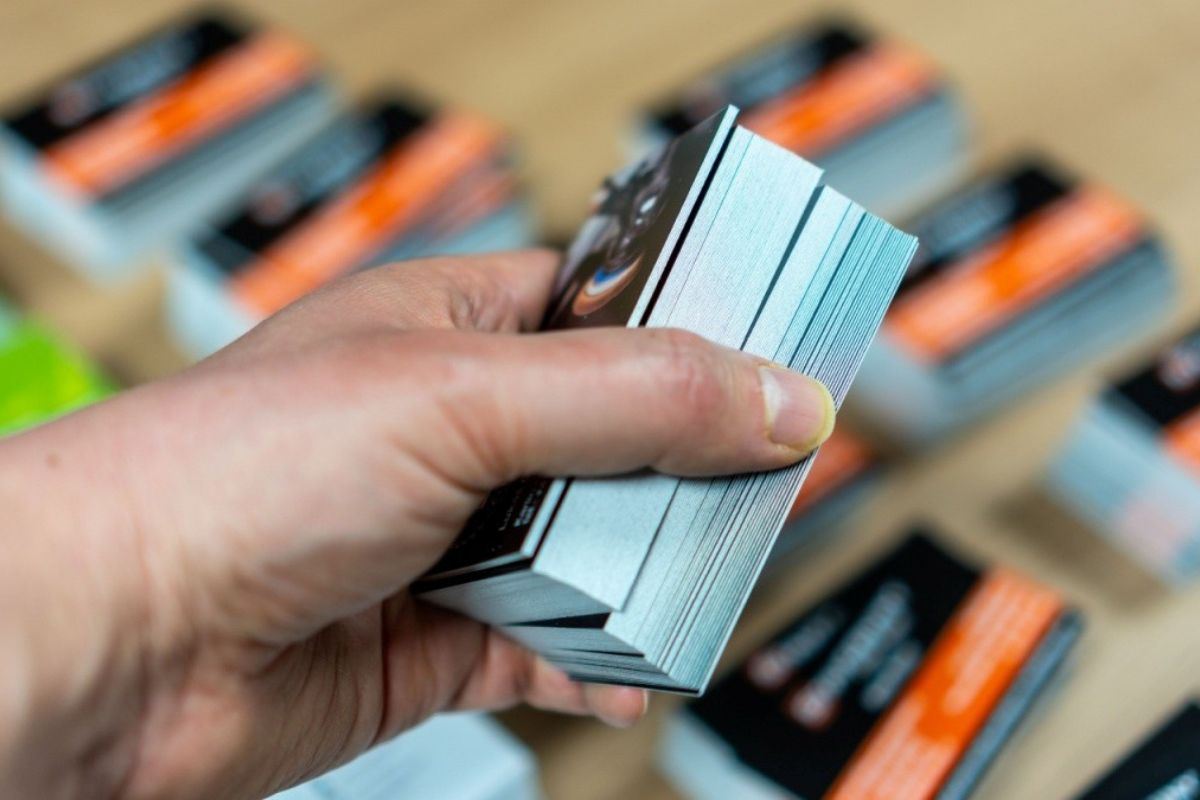Why You Still Need A Business Card

With smartphones, QR codes, and LinkedIn just a tap away, it’s normal to wonder whether classic printed business cards are a thing of the past. Do you really need to carry bits of paper when you can connect online in seconds?
In short, they are still relevant and useful. A business card might feel old school, but it’s a powerful, affordable tool that can help you make a great impression and share your details easily.
Here’s why business cards still matter in 2025 and how to use them well.
If you haven’t launched your business yet, now’s a great time to take the next step. Quality Company Formations can help you set up your limited company online in just a few minutes.
Table of Contents
ToggleBusiness Cards Still Create A Strong First Impression
Meeting someone face-to-face is often the most valuable kind of networking, and handing over a business card in that moment shows you’re ready to connect. It adds a level of polish that saying “just Google me” doesn’t quite achieve.
Even in casual settings, such as in a coffee shop, or even while you’re mingling with new people on holiday, being able to hand over a simple, well-designed card shows you’re always prepared and open for business. It takes seconds, but it leaves a lasting impression.
It also reflects positively on your business. A high-quality business card tells people you’ve taken the time to think about your brand and how you present yourself. That can go a long way when you’re trying to build trust or stand out from the crowd.
Your card can also give people something tangible to remember you by. For creatives or service-based businesses, you could turn your card into a mini-portfolio, a loyalty stamp card, or include a discount code for first-time customers.
Not Everyone Wants To Go Digital
It’s easy to assume that everyone prefers scanning a QR code or swapping LinkedIn details, but not all contacts want to connect that way. Some people like to keep things offline and away from screens, especially at events where they’re meeting lots of people quickly.
A physical card is easy to hand out without fumbling with your phone or needing an internet connection. It also feels more personal. Plus, not every situation lends itself to a digital follow-up. If someone’s phone is dead or they’re rushing to another meeting, handing over a business card is much quicker than trying to connect online.
Business Cards Are A Tool For Real-World Networking
At trade shows, pop-ups, business fairs and pitch nights, real-life networking is still going strong. And in those settings, business cards are quicker and more convenient than digital options.
Handing over a card saves time, avoids typing errors, and doesn’t interrupt the flow of conversation. It also shows you came prepared and gives the impression you’ve done this a million times, even if you have not – an important trick if you’re just starting out and you want to appear established.
Even if the person you give it to doesn’t contact you right away, your card might sit on their desk, get pinned to a noticeboard, or be passed to someone else in their network, whereas on LinkedIn, you would become just another forgotten contact. Business cards can continue working for you long after the initial meeting ends.
You Can Use Them To Drive Digital Action
Modern business cards don’t have to stay in the past. With a smart design, they can point people straight to your digital world.
Adding a QR code that links to your website, social media pages, booking page, or LinkedIn profile makes your card interactive. Some businesses even use trackable QR links to measure how many contacts visit their page after getting a card. It’s a clever way to bridge the gap between offline meetings and online engagement.
You can also use your card as a starting point for automated follow-ups. For example, a QR code could lead to a landing page where people can sign up to your newsletter, book a consultation, or download a free guide.
What To Include On A Business Card In 2025
If you’re printing new cards, keep them clear and uncluttered. You don’t need to squeeze every detail onto one tiny rectangle, just the essentials that help people reach you or find out more.
Here’s what to include:
- Your name and job title
- Company name and logo
- Website or booking link
- Email address and/or phone number
- Optional: QR code, social media handle, or tagline
You can leave off your physical address unless it’s relevant (for example, if you run a shop). If you’d prefer not to use your home address on your business card, you can use a professional business address service to help protect your privacy.
The most important thing is to make it easy for someone to contact you the way you prefer.
Eco-Conscious? You’ve Got Options
Worried about waste? Many founders are rethinking printed materials, but that doesn’t mean you have to skip business cards altogether.
Look for sustainable printing services that use recycled paper, FSC-certified materials, or vegetable-based inks. You can also print in smaller batches or use minimalist designs to reduce ink and card waste.
Or go one step further with an NFC-enabled card—these reusable cards let people tap their phone to get your contact details and links. You only need one, and it works like magic. It’s a smart solution that pairs well with a printed option, depending on who you’re speaking to.
Put Your Business In Their Hands (Literally)
Business cards are still worth having in your toolkit. They’re simple, affordable, and can make a big difference when you’re building connections, especially in person.
And if you’re just getting started with your business, don’t forget that Quality Company Formations can help you set up your company online in just a few minutes, so you can go from idea to launch (and to business card) in no time.
Published by Chloe Jhonson
With over 5 years of experience in content creation, I specialize in crafting engaging posts across various topics — from fashion, lifestyle, business & tech. Join me as I share insights & ideas to inspire your journey! View more posts
Recent Post
Golf Resorts In Greece – Something’s Changing

Rediscover Luxury and Nature at Hotel Xcaret Mexico






